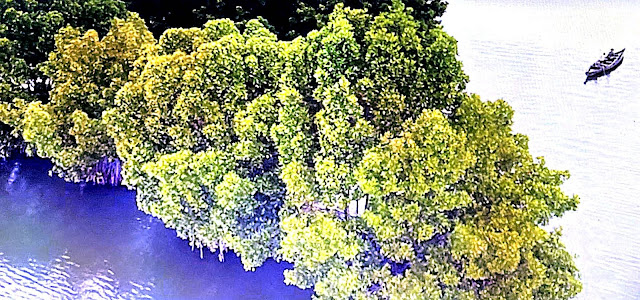Pressure:
Pressure
Pressure (p or P) is the force applied perpendicular to the surface of an object per unit area over which that force is distributed. [2]
Various units are there for expressing pressure. Some of these derive from a unit of force divided by a unit of area; the SI unit of pressure, the pascal (Pa), for example, is one newton per square meter (N/m2); similarly, the pound-force per square inch (psi, symbol lbf/in2) is the traditional unit of pressure in the imperial and US customary systems. We can express pressure in terms of standard atmospheric pressure; the unit atmosphere (atm) is this pressure, and the torr is 1⁄760 of this value.
The pressure exerted by particle collisions inside a closed container. The collisions that exert the pressure are highlighted in red. [1]
Definition
Pressure is the amount of force applied perpendicular to the surface of an object per unit area. The symbol for it is p or P.[3] The IUPAC recommendation for pressure is a lower-case p.[4] However, upper-case P is popular. The usage of P and p depends upon the field in which one is working, the nearby presence of other symbols for quantities such as power and momentum, and writing style.
Formula
Mathematically: [5]
𝑝=𝐹𝐴,where
- 𝑝 is the pressure,
- 𝐹 is the magnitude of the normal force,
- 𝐴 is the area of the surface on contact.
Pressure is a scalar quantity. It relates the vector area element (a vector perpendicular to the surface) with the normal force acting on it. The pressure is the scalar proportionality constant that connects the two normal vectors: 𝑑𝐹𝑛=−𝑝𝑑𝐴=−𝑝𝑛𝑑𝐴.
The minus sign comes from the convention that the force is considered toward the surface element while the perpendicular vector points outward. The equation has meaning in that, for any surface S in contact with the fluid, the total force exerted by the fluid on that surface is the surface integral over S of the right-hand side of the above equation.
It is incorrect (although rather usual) to say The pressure has direction in such or such direction. The pressure, as a scalar, has no direction. The force given by the previous relationship to the quantity has a direction, but the pressure does not. [1]
Pressure is distributed to solid boundaries or across arbitrary sections of fluid normal to these boundaries or sections at every point. It is a fundamental parameter in thermodynamics and is conjugate to volume. [6]
Stiletto Heel Makes Dents On A Surface And A Boot Leave It Unmarked. Why?
The standard atmospheric pressure at sea level on the earth is 1013.25 millibars. It varies with altitude and depth. At altitudes, the pressure decreases, and at depth, it increases. Let us think about some situations where pressure variation influences our daily life.
Stiletto heels cause a dent in a surface, while the boot worn by the same person leaves it unmarked.
It is because the stiletto heels exert more pressure than heavy boots. Pressure is a measure of the concentration of force. The stiletto heel concentrates the weight on a small area, while the boot exerts the same in a larger space. Fluids, liquids, and gases also exert pressure.
Similarly, an ice skate's narrow blade concentrates a person's weight on a small area. The high pressure under the skate melts the ice, reducing friction so the skater can slide over the ice.
In the case of a snowshoe, it has a broad and large base. So weight is exerted on a wide area. So the wearer can walk over the snow without sinking.
Upthrust:
A liquid exerts pressure on any object in it. If you push a closed, empty bottle underwater, you will feel the water pushing back. This pushing is an upward force called the upthrust, and it is due to the pressure of the water on the bottle. The upthrust is equal to the weight of the water pushed aside as the bottle submerges.
Floating and sinking:
If the upthrust of the liquid is equal to the weight of the immersed object, it will float, otherwise sink. Let us consider four balls of different weights. Place all balls in a tank of water. The first ball is plastic, and the upthrust keeps the ball floating. The other two sink partially until they displace the water equal to their weight. The second ball is rubber, and the third one is hardwood. The fourth ball sinks because the mass of the golf ball is greater than that of plastic and other balls.
Pressure variation:
Sometimes solids, liquids, and gases show variations in pressure. Sometimes, it is higher, and other times, lower than normal pressure. We can take advantage of these pressure variations in our lives. Our body can withstand only a limited range of pressure. The deep ocean is under extreme pressure, and it can kill a person. Low pressure at high altitudes makes breathing difficult.
At the bottom of the sea, the weight of the water above creates tremendous pressure. Submersibles are strong enough to withstand that pressure.
In space there is no air, so no air pressure. This would cause breathing problems. So astronauts wear pressurized suits in spacecraft. They breathe the supply of oxygen at normal Earth pressure.
Pressure cooker:
We can increase or decrease the boiling point of a liquid by raising or lowering pressure on it. Inside a pressure cooker, high pressure increases the boiling point of water from 100oC to 120oC. At this temperature, water cooks the food quickly.
High altitude pressure:
In 1646, Blaise Pascal showed that air pressure decreased with altitude. He also realized that the pressure exerted by a liquid acts in all directions.
Lowering the pressure that acts on a liquid reduces its boiling point. At high altitudes, it is a long time process to make hot drinks or cook with boiling water. Air pressure is much lower at high altitudes, and this reduces the boiling point of water to 60oC.
To power machinery and tools, we can use the pressure exerted by a fluid in a confined space. Using high-pressure liquids, we can power hydraulic machines.
Hydraulic brakes:
When applying the brake lever of bicycles, it squeezes fluid inside the brake cable. The fluid transmits the pressure to the brake pads, which grip the wheel and slows it down.
Pneumatic drill:
In the case of a pneumatic drill, pump the high-pressure air into a cylinder inside it. There, it pushes the piston up and down with great force. The piston hammers the drill point into the surface of the hard rock.
Pressure variation on deep earth:
We have already discussed the pressure variation in the ocean, the earth's surface, and at high altitudes. Now, let us discuss the change of pressure on deep earth.
The Earth's upper mantle behaves in a more liquid-like manner than the mantle below. It may be causing the tremendous increase in pressure on deep Earth. Another reason may be the chemical changes within the Earth's mantle.
References
1 Wikipedia
2 Knight, Randall D. (2007). "Fluid Mechanics". Physics for Scientists and Engineers: A Strategic Approach (Google Books) (2nd ed.). San Francisco: Pearson Addison Wesley. p. 1183. ISBN 978-0-321-51671-8. Retrieved 6 April 2020. Pressure itself is not a Force, even though we sometimes talk "informally" about the "force exerted by the pressure. The correct statement is that the Fluid exerts a force on a surface. In addition, Pressure is a scalar, not a vector.
4 ^ McNaught, A. D.; Wilkinson, A.; Nic, M.; Jirat, J.; Kosata, B.; Jenkins, A. (2014). IUPAC. Compendium of Chemical Terminology, 2nd ed. (the "Gold Book"). 2.3.3. Oxford: Blackwell Scientific Publications. doi:10.1351/goldbook.P04819. ISBN 978-0-9678550-9-7. Archived from the original on 2016-03-04.
5 ^ R Nave. "Pressure". Hyperphysics. Georgia State University, Dept. of Physics and Astronomy. Retrieved 2022-03-05.
6 ^ Alberty, Robert A. (2001). "USE OF LEGENDRE TRANSFORMS IN CHEMICAL THERMODYNAMICS (IUPAC Technical Report)" (PDF). Pure Appl. Chem. 73 (8): 1349–1380. doi:10.1351/pac200173081349. S2CID 98264934. Retrieved 1 November 2021.
See Table 1 Conjugate pairs of variables ... (p.1357)















Comments
Post a Comment